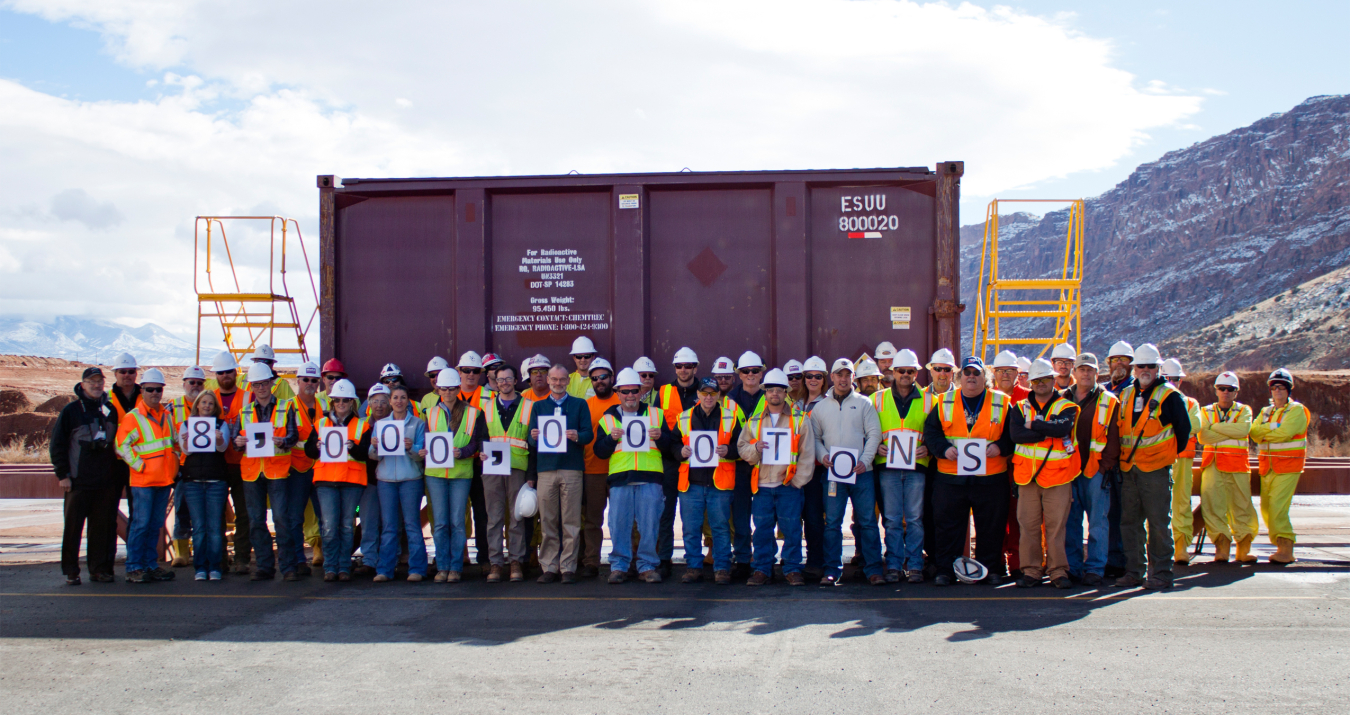(Grand Junction, CO) ― The U.S. Department of Energy (DOE) has reached 8 million tons of uranium mill tailings removed from the Moab site in Utah under the Uranium Mill Tailings Remedial Action Project.
January 20, 2016
(Grand Junction, CO) ― The U.S. Department of Energy (DOE) has reached 8 million tons of uranium mill tailings removed from the Moab site in Utah under the Uranium Mill Tailings Remedial Action Project. That is half of the estimated total 16 million tons to be shipped to an engineered disposal cell near Crescent Junction, Utah.
“The first train shipment was in April 2009, so in less than 7 years, we have reached the halfway mark,” said Federal Project Director Donald Metzler. The Moab Project was able to accelerate
shipments with funding received under the American Recovery and Reinvestment Act of 2009 (ARRA). “ARRA definitely gave us a boost in shipping, but since then we have
continued to make steady progress on safely moving the tailings away from the Colorado River,” acknowledged Metzler.
At of the end of December 2015, site employees had worked 2.5 million hours without a work related, lost-time injury or illness, as defined by the Occupational Safety and Health Administration. This record was more than 6 years in the making, as the last lost-time injury occurred in November 2009.
“Because we are a small site within the DOE complex, it takes a long time for us to work even a million hours. To reach 2.5 million hours without a lost-time injury is impressive by any standard,” said Remedial Action Contractor Project Manager Jeff Biagini.
To celebrate both milestones, site workers received fleece jackets with emblems touting “8 million tons shipped, 2.5 million safe hours worked,” provided by the contractors’ corporate offices.
Mill tailings are a sand-like material that remains from processing uranium ore. The tailings are transported by rail in sealed metal containers to Crescent Junction, which is located 30 miles north of the Moab site. The tailings are placed in a DOE-constructed, U.S. Nuclear Regulatory Commission-approved disposal cell near Crescent Junction and capped with a 9-foot-thick, multi-layered cover composed of native soils and rock.

